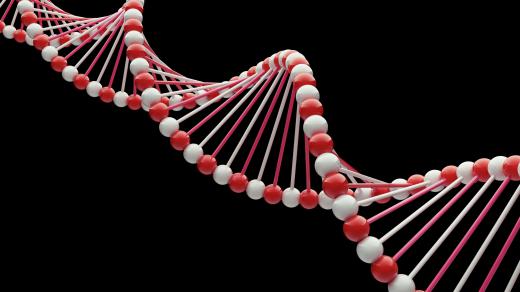At AllTheScience, we're committed to delivering accurate, trustworthy information. Our expert-authored content is rigorously fact-checked and sourced from credible authorities. Discover how we uphold the highest standards in providing you with reliable knowledge.
In Genetics, what is a Linkage Map?
A genetic linkage map is a tool used in genetic research to help scientists map the order of particular traits as they appear in a strand of deoxyribonucleic acid (DNA). It does not map distance between the traits on the DNA strand. Instead, it maps how frequently they will recombine. A genetic linkage map can help geneticists to find the genes that cause genetic disorders.
Normally, each cell in a human, plant, or animal carries two copies of each gene. Sex cells, such as eggs, sperm, and spores, undergo a process called meiosis, or cell division, which splits the cell in half. This leaves only one thread of DNA in each cell.

Genetic recombination happens before the cell splits. First the chromosomes form two lines along the middle of the cell, creating pairs of genes. Sometimes the chromosomes break in half. Broken pieces are then combined to produce new molecules. This process, known as genetic crossover, happens to each human chromosome an average of 1.5 times for each sex cell that is formed.

This exchange of genetic material is what allows offspring to have different traits from their parents. It is why two brown-haired parents can produce a blond child. The process of genetic recombination allows a species to genetically adapt to its environment over time. It can also lead to genetic diseases.
Geneticists can use a genetic linkage map to find where certain traits appear. These traits are called DNA markers. Any inherited trait can be a DNA marker as long as it differs from person to person and can be detected easily in a lab. Mapping known traits, such as hair and eye color, can help scientists extrapolate where other traits might appear.
The physical distance between traits on a genetic linkage map is determined by the frequency of recombination. DNA markers with a higher frequency of recombination are shown as far apart. Markers with a lower frequency are close together.

This works because genes that are close together are less likely to be separated by recombination. For instance, if the gene for blue eyes is next to the gene for blond hair on the genetic linkage map, then children with blue eyes are likely to also have blond hair. If, however, there are a lot of other genes between blue eyes and blond hair, the confusion of genetic crossover may separate these traits, causing blue eyes and brown hair.
These are only assumptions, however. Genetic linkage maps are often used as a framework for physical maps, which are detailed maps of the DNA sequence. They allow scientists to rapidly identify particular genes.
AS FEATURED ON:
AS FEATURED ON:














Discuss this Article
Post your comments